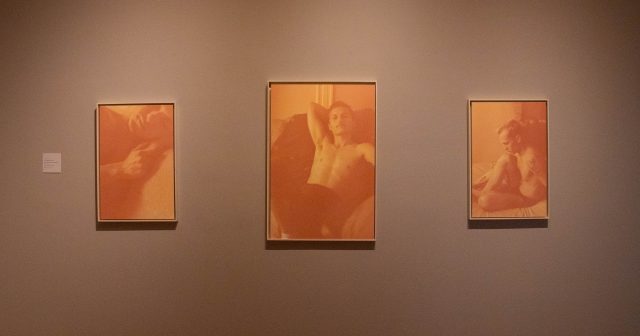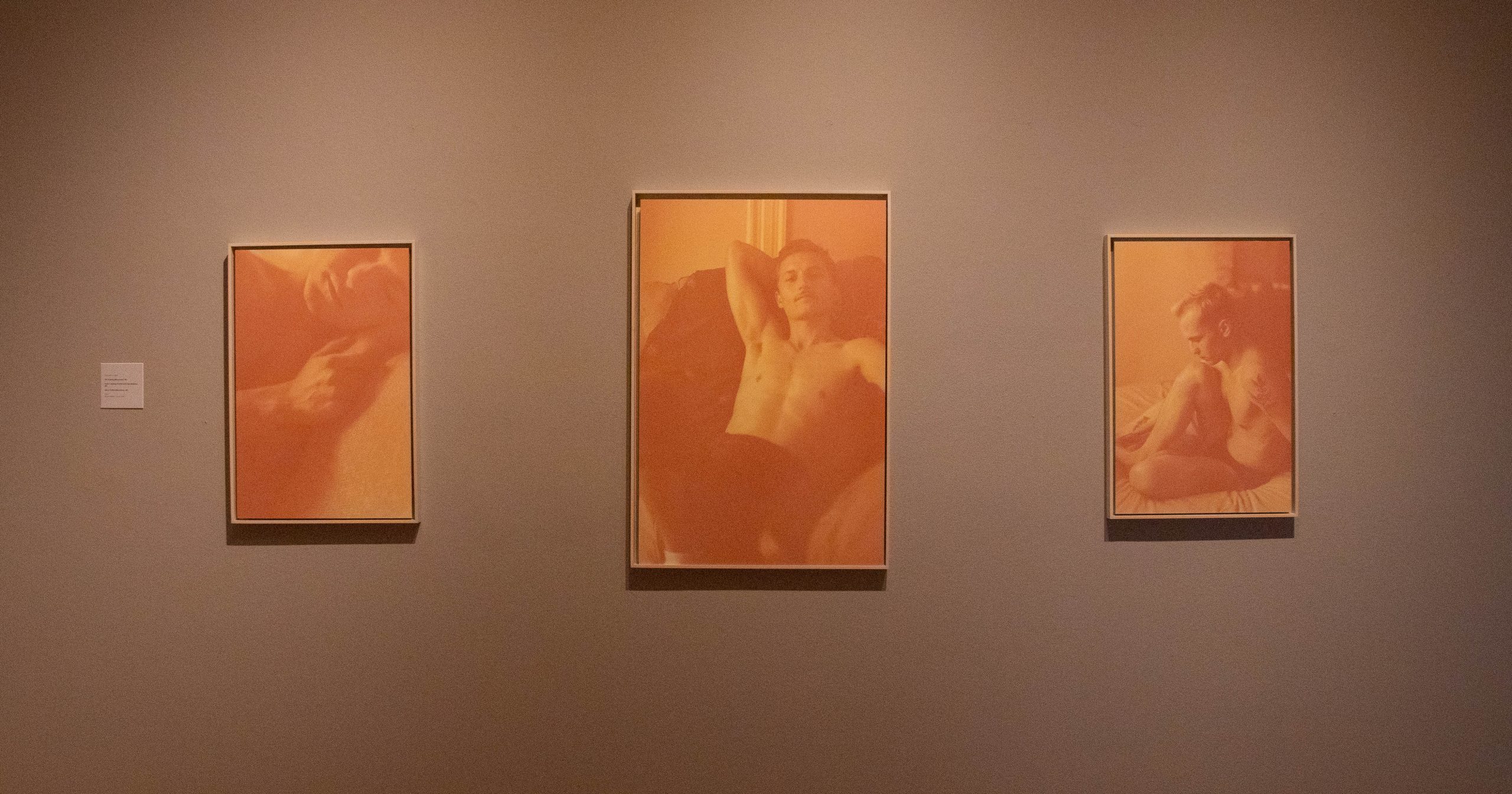The Fall Term exhibits of the Wriston Art Galleries are here! With a bold presence, the gallery’s three exhibits cover a considerable diversity of subject matter. On display is pottery of a modernist Pueblo tradition, gentle reminiscences of gay hookup culture and a striking testamonial warning to the climate crisis.
In the frontmost Leech Gallery, pottery is carefully scattered around the room. The ceramics were pulled from Lawrence’s own collection, which consists of around 6,000 total objects. The seven here are the work of Maria Poveka Martinez (1887–1980), with occasional collaboration from family members, such as her husband Julian and her son Popovi Da.
Each object stylistically blends the Pueblo tradition with a modernist style. They include a jar, dish, plate, bowl, vessel and two jars, delicately crafted to an ideal smoothness. Although there is some texturing with greys and browns, the ceramics are chiefly colored in shades of black. This Soulagean approach indicates a high level of creative decisiveness that enlarges their practical value with a further aesthetic one.
Martinez has been credited with reviving the Puebloan ceramics tradition. It is easy to see why: vibrant coloring is a distinct trait of earlier examples, but when this aspect is removed, the artist is forced to perfect the aspects which remain — style, shape, form and contour. Surely this approach has its challenges, but it is also a unique lens for their individuality.
Martinez kept her craft close, preferring traditional hands-on methods over modern technology. Although she embraces her individual approach, she is constantly reinventing herself; each object tests the effect of varying levels of decorative flourishes. Even her signatures vary, with at least four styles present.

The work of Jorge Ariel Escobar features in the Hoffmaster Gallery. The photographs of his exhibit, “I Think We Could’ve Been Something,” portray gay hookup culture with remarkable subtlety and delicacy, all while preserving realism.
Escobar used the dating app Grindr — along with the aid of mutual friends and bars — to meet various gay men who became the subjects of his photographs. As he notes, such contexts commonly lead to brief flings or long-term relationships, both of which he finds value in.
The result is deeply intimate photos which capture both moments of transit and those of new beginnings. He rejects any notion of conscious posing, instead seeking natural positions during conversation or rest. The surrounding location — usually some kind of living space — along with the third-person view offers the viewer an invitation to the context’s domestic sphere.
Each of Escobar’s photographs clearly identifies their subject in the title: “Erik Resting,” “Cristian Turning Back to Me” or “Payton Waking Up Next to Me.” The result is a heavily personalized depiction, in which Escobar stresses that their significance outweighs their brevity.
His photographs suggest that human connection is not defined by longevity. Moments of mutual caressing, romantic eye-contact or gentle embraces feature prominently and evoke genuine emotion. Such an impact can be easily felt by the subjects and the viewers.
The art of the Kohler Gallery suddenly envelops any unsuspecting viewer. One is faced with a monumental testimony to the climate crisis: textiles, which fill nearly every surface of the room. One approach is heartfelt, the other scientific.
“The Knitting Map,” quickly steals the viewer’s attention. As an overwhelmingly massive textile, the impression it leaves is outstanding. This is aided by the relatively small size of the gallery, alongside an accompanying plaque which includes an enormous list of its contributors.
Recently finished in 2023, the project began when Jools Gilson and Richard Povall began formulating the concept in 2005. Although these were the early days of climate awareness in the public consciousness, they stuck with the topic intently as the volunteer contributors rose from 50 to thousands more.
The most intentional decision for the textile is its color palette. Lush greens, deep blues and desolate browns properly represent the earth’s general environment. As a result, we are faced with a deeply familiar setting with impossible-to-ignore grandeur.
The Kohler Gallery also features “The Tapestry Project,” a comparatively smaller work with similar intentions, made by Asy Connelly, Marissa Connelly and Emily McNeil. The creators morph these works into vertical timelines, which include various major world events.
The diversity of these galleries is a must-see invitation. Whether one is seeking impressive handicrafts, reflective contemplation or a thought-provoking reality check, all three can be appreciated in the galleries. The exhibits remain until Friday, Nov. 17, but don’t wait to visit!

